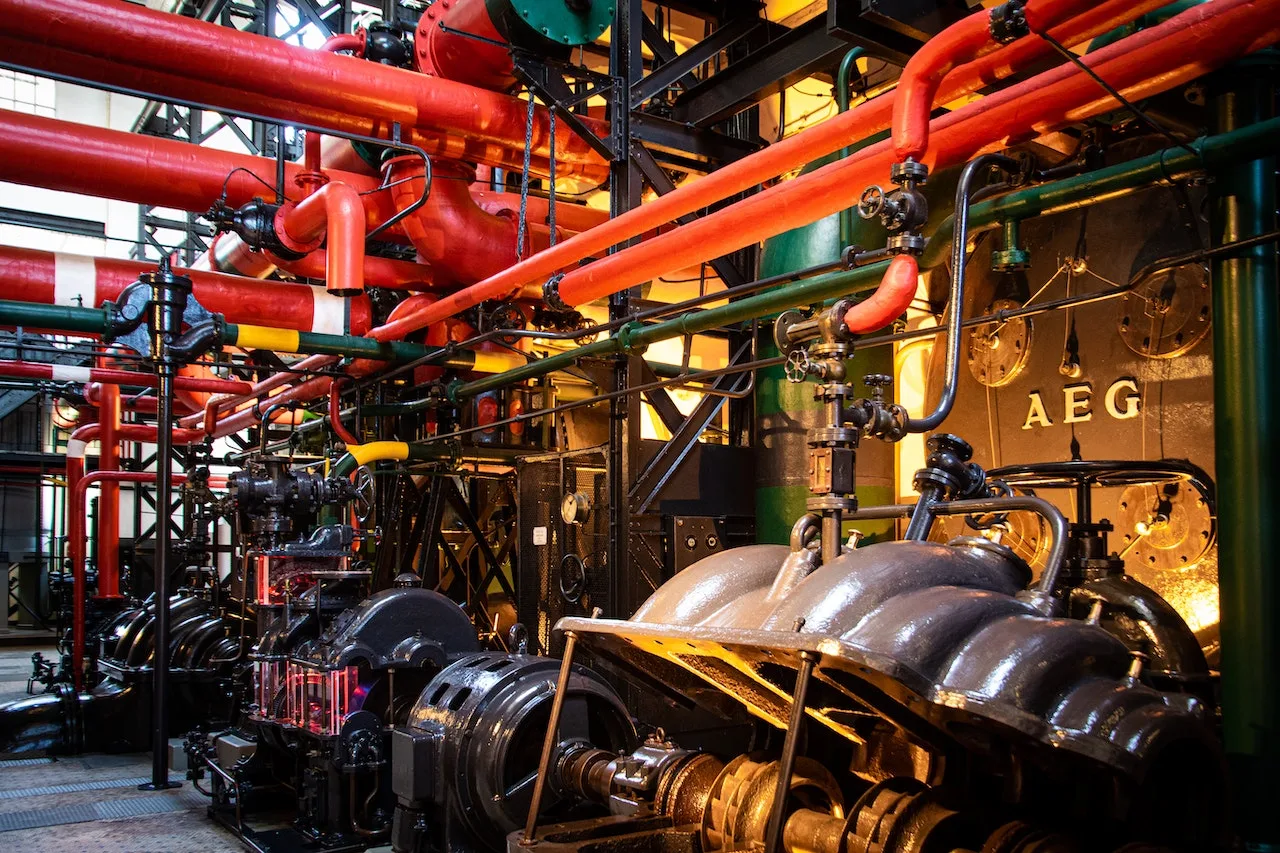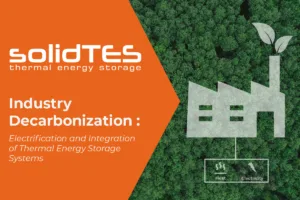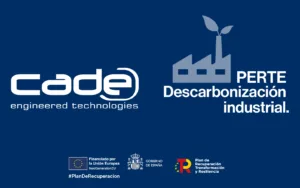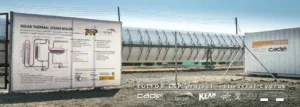A view of thermal energy production
The most relevant use of natural gas at an industrial level lies in the production of thermal energy (heat) to carry out various industrial processes. Overcoming external dependence on this resource is a significant challenge that needs to be addressed. According to data from the IEA (International Energy Agency) as part of the Solar Payback project back in 2014, the final global energy consumption in the industrial sector was 32% of the total consumption. Within the sector, 74% of the energy was consumed in the form of heat, with the remainder being used in electricity.
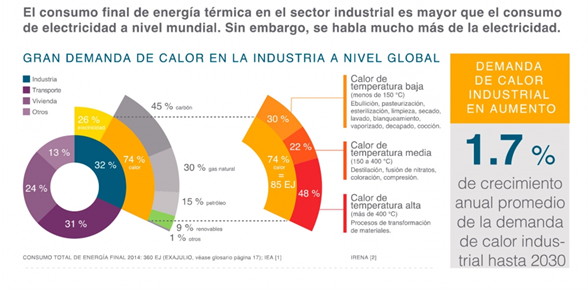
This remains true in 2021 for the European Union as well: observing the final energy consumption in the industrial sector (in GWh), it reflects that 33.22% of the consumption is in electricity, while the rest is primarily consumed in the form of heat and derivatives, at around 70% (66.78%).
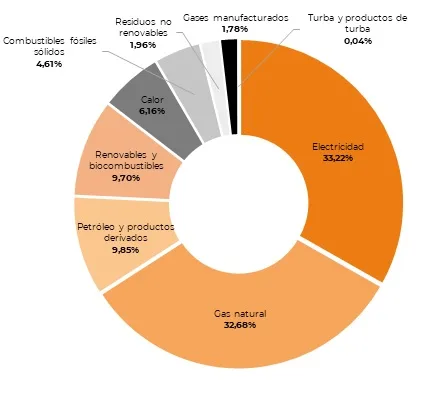
Additionally, a look at the gross heat production (in GWh) for industrial processes in the EU with the latest 2021 data gives us a clearer view of recent generating trends.
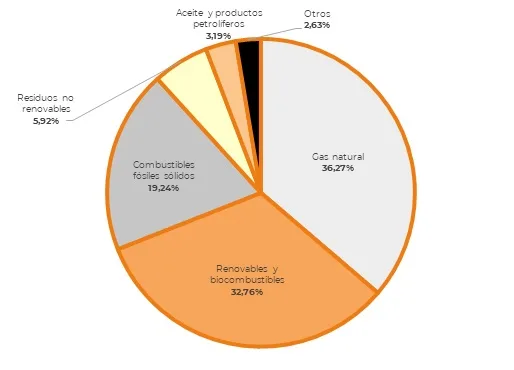
“Firstly, natural gas is the primary heat generator in the EU, accounting for 36.27% of the total gross production (651,314.84 GWh), closely followed by renewable sources and biofuels. Since most heat generation sources are fossil fuels and non-renewable, they lead to environmental issues: in fact, the energy and industrial process sectors are the largest greenhouse gas emitters in Europe, as 70% of the energy they use in their processes is heat. Additionally, the issue of energy autonomy remains a challenge due to heavy dependence on imported fossil fuels.
However, trends in these markets and sectors show that they are increasingly embracing sustainable and clean energy production sources as a result of awareness about climate change and policies aimed at decarbonization and the utilization of waste (both organic and energy-related).
For example, as shown in the following graph, since 2012, the European Union has transitioned from a 16% consumption of energy from renewable sources to 21%, Spain from 14% to 20%, and countries like Norway and Iceland already had a percentage exceeding 70% and 80% respectively in 2021.”

Another example is the most recent Eurostat data (2021) on gross electricity production (in GWh): it points to renewable sources and biofuels as the largest generating source, indicating a positive direction towards the energy transition
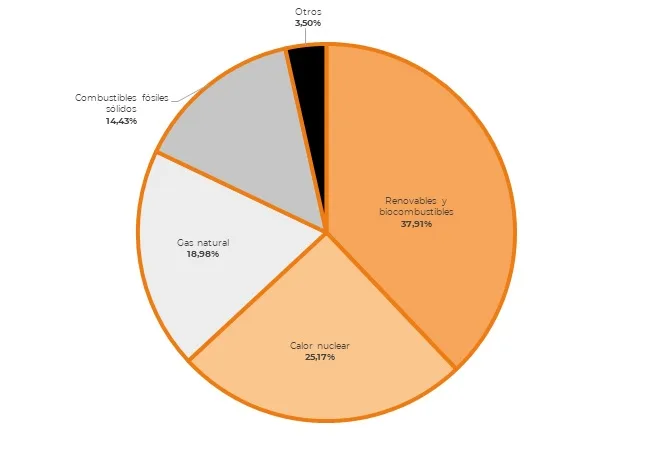
Natural gas is fading away, and renewable heat sources with thermal storage are consolidating.
Despite the growing trend of markets and sectors towards sustainable and clean energy sources in both electricity and heat generation, renewable sources often produce temporary surpluses (supply exceeding demand), and this surplus is an opportunity if it could be stored.
This is where energy storage will play a fundamental role, whether through electric batteries, thermal storage systems, and others, such as gravity storage and reversible water pumping stations.
On the other hand, thermal storage solutions represent a crucial innovation for decarbonization, as they allow us to completely eliminate the need to use gas (and other fossil fuels) even at night, thus contributing to achieving the much-desired 100% energy independence.
Their industrial deployment will make renewable sources leaders in heat production, slowing down natural gas imports and reducing uncertainty regarding energy supply
Projects' examples
The demand in the market for thermal storage technological solutions is driving the deployment of a large number of projects in the demonstration or pre-commercial phase, which will accelerate the comprehensive and widespread introduction of these systems on an industrial scale. Here are some notable and recent projects:
- Norbis Park Project: 18MWh thermal storage systems for urban heating have been inaugurated in the Norbis Park power plant complex, jointly serving the Nordjylland region. Aalborg Forsyning is the utility owner of the complex, and their goal is the transition to green energy.
- A gigafactory for thermal storage has been built in Israel with the aim of producing 4GWh of thermal energy by the end of 2023. Additionally, Wolfston Hospital has incorporated the technology with a budget of 3.7 million US dollars to replace the heating system in the public hospital in Tel Aviv.
- The opening of a 4MW solar photovoltaic plant along with 50MWh thermal storage in Victoria, Australia. This plant can store heat for 17 hours.
- Avery Dennison, a Dutch company that manufactures materials and packaging, has opened probably the largest concentrated solar thermal power plant in Europe in Belgium. This plant contains 6 modules of thermal storage and provides industrial heat up to 2.7 GWh equivalent of gas consumption. Its use will be mainly concentrated in their industrial ovens for manufacturing adhesive materials.
- Lake Sustainable Energy Precinct is a precinct plan in Lake Cargelligo, New South Wales, Australia, valued at 18.6 million US dollars for generating renewable energy. This precinct consists of 5MW of solar energy along with energy storage systems, including thermal energy for heating, cooling, and drying. The energy will be used in agricultural operations such as greenhouses or fish farms.
CADE's Role in this Technological Revolution
CADE is a leading and independent company in engineering, consulting, and technology, capable of giving specialized services to its clients anywhere in the world and deploying technological and innovative solutions, to lead the transition towards a decarbonized, digital, and sustainable industry.
Since 2009, CADE develops Research, Development, and Innovation (I+D+i) activities related to new disruptive technologies and industrial applications related to renewable energies and clean technology. Therefore, the company has developed the solidTES technology for solid thermal storage, being this the key for a 100% renewable industry, allowing a greater coverage for renewable energy generation systems and providing flexibility in energy management.
solidTES allows managing on-demand in an intelligent way a variable energy mix (electric and thermal), offering renewable coverage of up to 100%. The integrated and decarbonized solution allows energy independence from fossil sources.
The evolution of this technology has had different milestones:
- Project EDITOR (2016): CADE developed a demonstration plant with a prototype thermal storage system based on solidTES technology with solar thermal charging to supply steam to the process for Kean Soft Drinks Ltd. in Limasol, Cyprus. The system is based on a tube bundle (through which a high-temperature thermal fluid circulates) embedded in a matrix of high thermal performance composite material (similar to concrete), whose composition varies according to the required operating temperature range (up to 400°C). Its power and capacity are 125 kW th / 600 kWh th, and it has been operational since 2018.
- TES4Trig Project (2021). The second-generation solidTES thermal storage system made by CADE for this project can handle temperatures up to 400°C and is based on aggregates as the heat storage material, and air as the heat transfer fluid. This TES absorbs the excess generation from a solar field of cylindrical-parabolic collectors and subsequently supplies it to an organic Rankine cycle capable of supplying electricity, cooling, and heating to an office building (trigeneration). Its power and capacity are 75 kW th / 400 kW th and has been in operation since 2023.
- Finally, in 2023, with the development of the monolit-e and megalit-e thermal storage systems, with both innovative and low-cost storage materials such as solids, which retain these surpluses (at times when electricity prices are low) in the form of high-temperature heat for hours to then be used in industrial processes when electricity prices are high. In addition, with these systems, thermal energy would be efficiently managed under an intelligent control system based on a machine learning algorithm. (With the Internet of Things (IoT), it would be possible to change management preferences, give orders to the system, or visualize real-time data).
In summary, the industry is heading towards the decarbonization of industrial heat generation thanks to the implementation of these thermal storage solutions. Although the use of natural gas will persist, the pressure to reduce its imports and address environmental concerns will lead it to be a residual source in heat production, being replaced by other sources.

